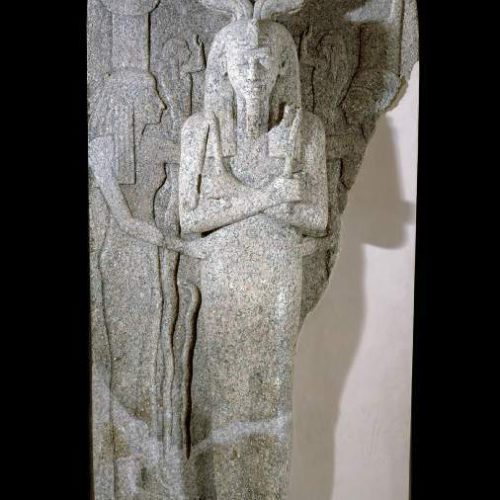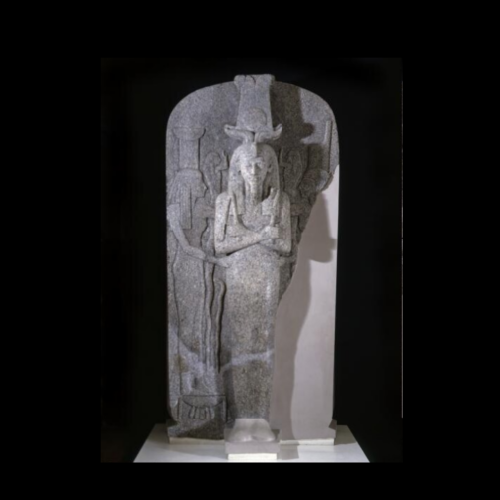This resource includes videos, activity ideas and information about objects
Make deductions from material evidence through guided looking and understand how symbols were used to communicate power in Ancient Egypt. Consider artefacts like this one both in a contemporary context and within an Ancient Egyptian timeline.
- What can you tell about the people shown on this artefact? What has been included to tell us about their lives?
- How was this artefact made and what material has it been made from?
- This artefact weighs 7 tonnes. How do you think it was moved down the river Nile and into the Valley of the Kings by ancient Egyptian people?
- The artefact is in the shape of a cartouche. A cartouche is usually found in hieroglyphics containing symbols spelling out the king’s name. Draw a cartouche and fill it with symbols that tell us about you. Think about where you live, who you might include, or what makes you different.
- Ancient Egyptians were expert builders and engineers, able to transport heavy materials such as this 7 tonne artefact over great distances. Find yourself a heavy rock. Can you construct a raft it will float on and something to move it across sand using only natural materials?
- Ramesses III ruled ancient Egypt between 1183 – 1152 B.C.E.. Can you work out how long ago this was? What does B.C.E. mean? Make a timeline with all the important ancient Egyptian dates you have learnt so far.
- Rameses III is shown here as the God Osiris, ruler of the underworld. You can identify him by the Atef crown he wears on his head. Try making your own crown including the Sun Disk, Ostrich feathers and rams horns. You may also want to investigate crowns worn by other rulers and Gods of ancient Egypt to compare and contrast.
Talking about death, human remains, and the beliefs and rituals concerning end of life can be difficult. Be sensitive to those in your classroom community who have recently experienced any kind of bereavement, or who may feel anxious discussing these topics.
Be prepared by offering alternative activities for those who find this too uncomfortable, but try to make space for those who want to explore and discuss their thoughts and feelings about death as well. Get support for yourself from colleagues or professional organisations if you need it.
At the museum, we try to teach about the people and real lives involved when we show these incredible items to classes. Using objects and artefacts to teach ancient Egypt is a fantastic way to encourage sensitive and ethical attitudes about other people’s cultures and beliefs. It also avoids othering the ancient Egyptian people, or explaining their vast culture in a reductive way.
The culture of Egyptomania across Western Europe and the USA led to some unethical acquisitions of things from ancient Egypt. You might discuss with your class how these artefacts came to reside in museums in England. What do your students think about the fact that so many ancient Egyptian items are so widely dispersed away from the country they were made and used in?

